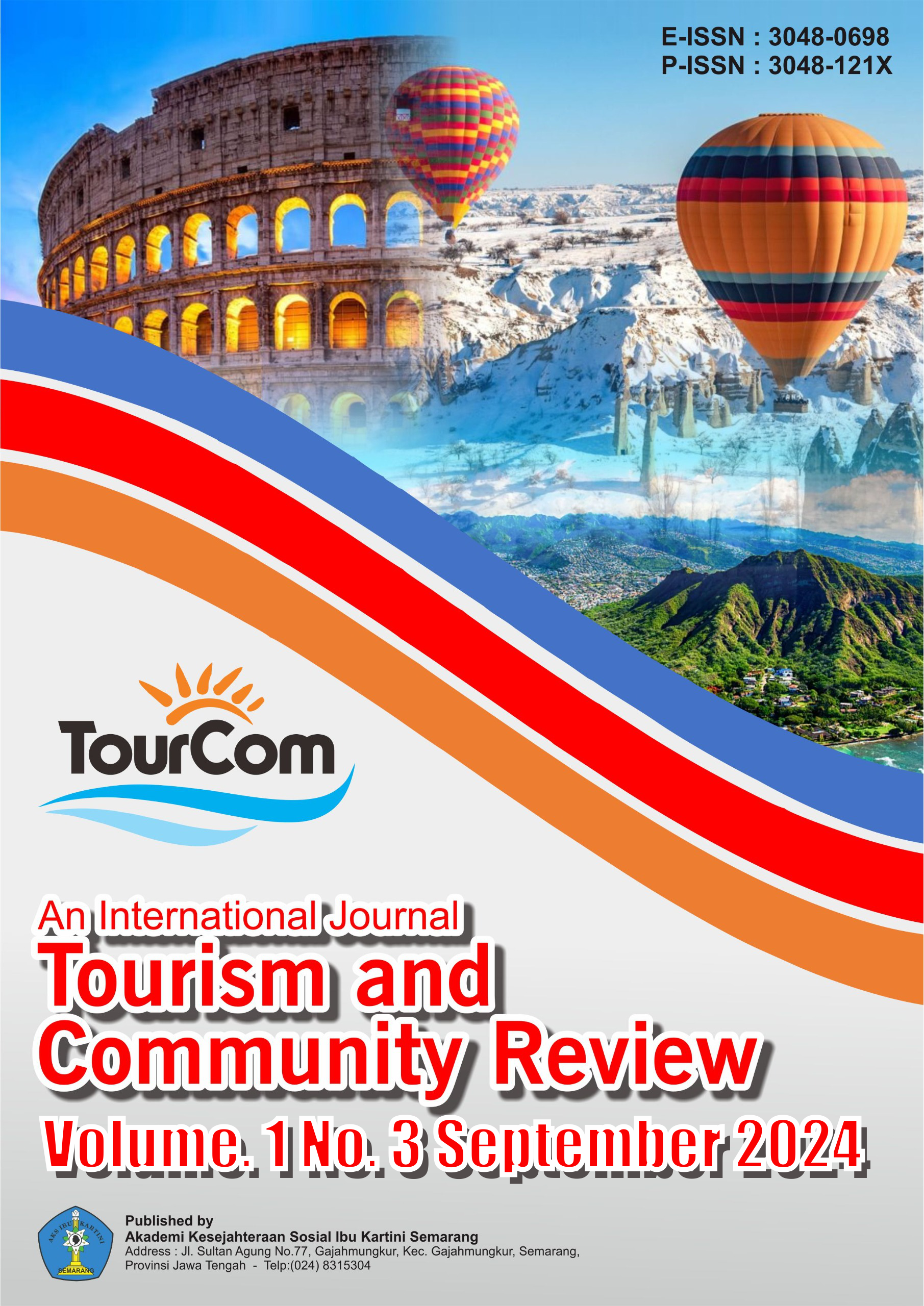Utilization Of Songket Fabric As A Wedding Dress With The Application Of Aesthetic Principles
DOI:
https://doi.org/10.69697/tourcom.v1i3.169Keywords:
Songket, Wedding, Dress, AestheticsAbstract
Songket fabric is one of the traditional fabrics originating from South Sumatra, songket fabric has been used as a subordinate of traditional clothing, it can be in the form of bodo clothes, tunics. The development of fashion that continues to rotate so that the preservation of this songket fabric is maintained, innovation is needed, to provide innovation so that songket fabric can be processed into fashion for wedding occasions with more modern models. The principle of aesthetics is a reference in creating innovations so that the results of innovation are in accordance with the intentions and goals. The problem is how to use songket fabric as a wedding dress by applying aesthetic principles. The purpose is to find out the use of songket fabric as a wedding dress by applying aesthetic principles. The data collection methods used are observation, documentation and literature. The data analysis used is qualitative data analysis. The manufacture of wedding dress using songket fabric and a combination of tulle fabric through the process of determining design, preparing tools and materials, taking measurements, making patterns, cutting materials, marking the patterns, sewing, pressing, and finishing. Unity lies in detail by detail is still continuous, balance lies in symmetrical balance and contrast is applied to the selection of materials in terms of texture and color. Wedding Dress clothing is as follows; using songket fabrics. The use of this songket fabric is a synthetic songket fabric, which is widely sold and the price is still affordable. There are different possibilities when using the original songket.
References
(2021, Desember). Retrieved from https://mctexstyle.id/kain-tile-polos/
Cahyadi, I. A. (2014). Eksplorasi motif pucuk rebung dengan tektik olah reka latar pada busana pengantin moderen. Jurnal Tingkat Sarjana Bidang Senirupa dan Desain, (1), 01.
Edi, D., & Betshani, S. (2009). Analisis data dengan menggunakan ERD dan model konseptual data warehouse. Informatika, 5(1).
Ervinawati, Y., & Maeliah, M. (n.d.). Busana pengantin barat dengan hiasan.
Ezenwakwelu, C. A., Akpan, E. E., & Ogbogu-Asogwa, O. I. (2021). Enabling service innovation through dynamic capabilities: Insight from telecommunication firms. International Journal of Business and Management Invention, 10(5), 54–63.
Fincham, J. (2008). Response rates and responsiveness for surveys, standards, and the journal. American Journal of Pharmaceutical Education, 72(2), 1–3.
Fitrah, S. M., & D. L. (2017, September). Metodologi penelitian: Penelitian kualitatif, tindakan kelas & studi kasus.
Haq, A., & Safitry, A. (2021). Pembuatan busana pesta menggunakan kombinasi kain shibori dengan variasi sulaman pita Jepang. Garina, 13(2), 170–181.
Hasanah, H. (2016, Juli). Teknik-teknik observasi. at-Taqaddum, 8(1), 21–22.
Jasmine, A., & Marniati. (2020). Penerapan crinoline sebagai bahan pelapis dalam (interfacing). Journal of Fashion & Textile Design Unesa, 1, 102–103.
Kebaya, A. (2015, Maret 2). Beberapa jenis kain yang digunakan pada kebaya.
Khatibah. (2014, Mei). Penelitian kepustakaan. Jurnal Iqra’, 05(1), 37–38.
Maryati, S. (2013, September). Membuat busana wanita. Retrieved from http://yantiaprianto.wordpress.com
Permatasar, I., & Nursar, F. (2020, Agustus). Perancangan busana pengantin menggunakan tenun lurik dengan konsep private wedding. e-Proceeding of Art & Design, 7(2).
Purwanti, R., & Siregar, S. M. (2016, November). Sejarah songket berdasarkan data arkeologi. Siddhayatra, 21(1), 97–106.
Saleh, S. (2017, Juni). Analisis data kualitatif. (H. Upu, Ed.), 174.
Semuel, H., Mangoting, Y., & Hatane, S. E. (2022). The interpretation of quality in the sustainability of Indonesian traditional weaving. Sustainability, 14(18), 11344.
Sondak, S. H., Taroreh, R. N., & Uhing, Y. (2019, Januari). Faktor-faktor loyalitas pegawai dinas pendidikan daerah provinsi. Jurnal EMBA, 7(1), 675.
Syamsudin, A. (2014, Juni 1). Pengembangan instrumen evaluasi non tes (informal) untuk menjaring data kualitatif anak usia dini. Journal Pendidikan Anak, 3, 404–405.
Tifanny, V., Rizali, N., & Rudiyanto, G. (2019, April). Busana pengantin Aesan Gede (tenun songket dan aksesoris) pada upacara pernikahan adat Palembang Sumatra Selatan. Jurnal Seni & Reka Rancang, 1(2), 213–222.
Downloads
Published
How to Cite
Issue
Section
License
Copyright (c) 2024 An International Journal Tourism and Community Review

This work is licensed under a Creative Commons Attribution-ShareAlike 4.0 International License.





